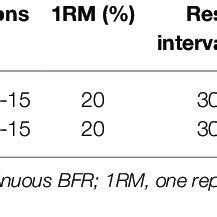Beyond reps: How to consistently drive workout progression for peak strength and power?

The Myth of Reps: Why Quantity Alone Isn’t Enough
Many lifters fall into the trap of believing that true progression in strength and power is solely about adding more reps or a few extra pounds to the bar each week. While progressive overload is the cornerstone of effective training, its application is far more nuanced than a simple linear increase. To truly unlock your peak strength and power potential, you need to think beyond the immediate sets and reps and adopt a more holistic, strategic approach to your training.
Consistent progression isn’t about avoiding plateaus; it’s about understanding why they happen and having a diverse toolkit to overcome them. It’s about manipulating variables, optimizing recovery, and listening to your body to ensure a sustainable path to gains.

Understanding True Progressive Overload
Progressive overload means continually challenging your muscles to adapt to a greater stimulus. While adding weight or reps are primary methods, they are far from the only ones. Here are critical dimensions of progressive overload to consider:
1. Intensity (Load)
This is the most straightforward: increasing the weight lifted. Small, consistent increases over time are more effective than sporadic, massive jumps.
2. Volume (Sets x Reps x Load)
Manipulating the total work performed. This could mean adding more sets, doing more reps per set with a given weight, or increasing the frequency of training certain muscle groups.
3. Frequency (How often you train)
Training a muscle group or movement pattern more often can lead to faster adaptations, provided recovery is managed.
4. Time Under Tension (TUT)
Slowing down the eccentric (lowering) phase or pausing at key points in a lift can increase the time your muscles are under strain, leading to new growth stimuli.
5. Exercise Selection and Variation
Switching to a more challenging variation of an exercise (e.g., goblet squat to front squat), or introducing new exercises that target the same muscle groups from a different angle, can stimulate fresh adaptations.

Strategic Approaches to Sustained Progression
1. Periodization: Plan Your Progress
Periodization involves systematically varying your training program over time to maximize adaptations and minimize overtraining. Instead of chasing PBs every week, periodization cycles through phases:
- Accumulation/Hypertrophy: Higher volume, moderate intensity for muscle growth.
- Intensification/Strength: Lower volume, higher intensity for maximal strength gains.
- Peak/Power: Low volume, very high intensity, focusing on explosive movements for power development.
- Deload/Recovery: Reduced volume and intensity to allow the body to recover and supercompensate.
This structured approach ensures you’re consistently introducing new stimuli while allowing your body adequate recovery to make gains.
2. Auto-Regulation: Listen to Your Body
While a plan is crucial, sticking rigidly to it when your body is fatigued or stressed can be detrimental. Auto-regulation involves adjusting your training based on daily readiness. Tools like RPE (Rate of Perceived Exertion) or RIR (Reps In Reserve) allow you to gauge how hard a set feels on a given day and adjust the weight or reps accordingly. This prevents overtraining on bad days and allows you to push harder on good days.
3. Technique Mastery: The Foundation of Strength
Before adding more weight, ensure your form is impeccable. Flawed technique not only increases injury risk but also limits your potential for true strength development. Consistently review and refine your lifting mechanics. A minor adjustment in stance or grip can unlock new strength levels that reps alone never could.

4. Unilateral Work and Accessory Exercises
Don’t neglect single-limb exercises (e.g., Bulgarian split squats, single-arm rows). They help address muscular imbalances, improve core stability, and can directly translate to stronger bilateral lifts. Similarly, well-chosen accessory exercises can strengthen weak links, allowing your primary lifts to progress.
5. Optimize Recovery: The Unsung Hero
Progression doesn’t happen in the gym; it happens during recovery. Prioritize:
- Sleep: 7-9 hours of quality sleep is non-negotiable for muscle repair and hormonal balance.
- Nutrition: Adequate protein, carbohydrates, and healthy fats support muscle growth and energy.
- Stress Management: Chronic stress elevates cortisol, hindering recovery and adaptation.
- Active Recovery: Light cardio, stretching, or foam rolling can aid blood flow and reduce soreness.

Putting It All Together for Peak Performance
Consistently driving workout progression for peak strength and power requires a multifaceted approach. It’s about intelligently manipulating training variables, strategically planning your cycles, listening to your body, and prioritizing recovery as much as the training itself. Embrace the journey of continuous learning and adaptation, and you’ll find yourself not just adding reps, but truly building a foundation for lasting strength and power.
Move beyond the simplistic view of progression and delve into the science and art of training. Track your progress diligently, celebrate small victories, and stay consistent. Your peak strength and power are within reach, waiting for a smart, sustained approach to unlock them.









